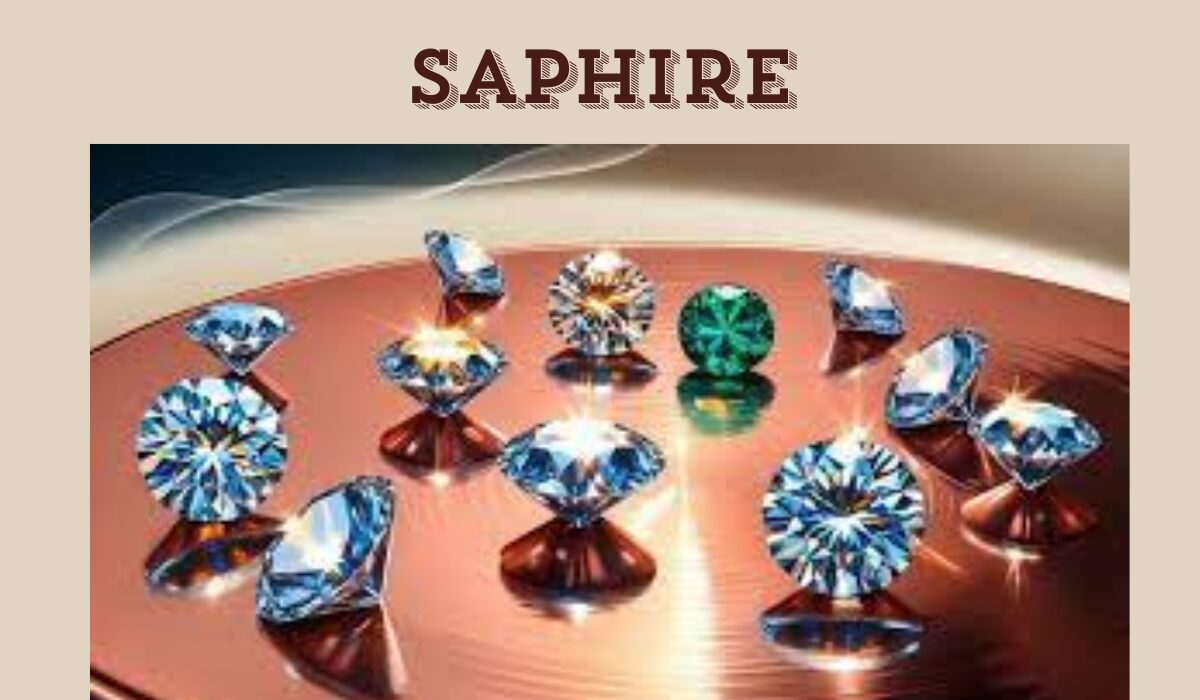Sapphires, (saphıre)known for their mesmerizing blue color and remarkable durability, have been cherished by humanity for thousands of years. These precious stones are more than just beautiful gems; they hold significant historical, cultural, and economic importance. In this article, we will delve into every aspect of sapphires, from their physical properties to their uses in modern technology, offering a comprehensive guide for enthusiasts and professionals alike.
Types and Categories
Sapphires come in various types and colors, each with its unique charm and value.
Natural vs. Synthetic Sapphire
Natural sapphires are mined from the earth, while synthetic sapphires are created in laboratories. Although both types share the same chemical composition and physical properties, natural sapphires are generally more valued due to their rarity and historical significance.
Colors and Varieties
- Blue Sapphires: The most famous and widely recognized type.
- Pink Sapphires: Valued for their vibrant and romantic hue.
- Yellow Sapphires: Known for their bright and sunny color.
- Green Sapphires: Rare and exotic, offering a unique appeal.
- Padparadscha Sapphires: A rare and valuable variety, characterized by a delicate blend of pink and orange.
Star Sapphire
Star sapphires exhibit a star-like pattern on their surface, caused by the presence of needle-like inclusions of rutile. This unique feature makes them highly sought after by collectors and gem enthusiasts.
Characteristics of Sapphire
Sapphires possess several distinctive characteristics that contribute to their appeal.
Physical Properties
- Hardness: Sapphires are second only to diamonds in hardness, making them incredibly durable and resistant to scratching.
- Luster: Sapphires exhibit a vitreous luster, adding to their brilliance and visual appeal.
Chemical Composition
Sapphires are composed of aluminum oxide (Al2O3) and trace elements like iron, titanium, chromium, and magnesium, which contribute to their various colors.
Optical Properties
Sapphires are pleochroic, meaning they can display different colors when viewed from different angles. This optical property adds to their allure and complexity.
Geographical Information
Sapphires are mined in various locations around the world, each contributing to the gemstone’s diversity and richness.
Major Sapphire Mining Locations
- Sri Lanka: Renowned for its high-quality blue sapphires and other colored varieties.
- Kashmir: Famous for its exceptional blue sapphires, often considered the finest in the world.
- Madagascar: A major source of both blue and fancy-colored sapphires.
- Australia: Known for its dark blue to black sapphires.
Famous Sapphire Mines
- The Ratnapura Mines (Sri Lanka): Also known as the “City of Gems.”
- The Yogo Gulch (Montana, USA): Famous for its cornflower blue sapphires.
Historical Significance
Sapphires have played a vital role in various cultures and histories.
Sapphire in Ancient Cultures
Ancient Persians believed that the sky was painted blue by the reflection of sapphires. Sapphires were also used by ancient Greeks and Romans for protection and prophecy.
Famous Historical Sapphires
- The Star of India: One of the largest star sapphires in the world.
- The Logan Sapphire: A stunning 423-carat blue sapphire.
Sapphire in Royal and Religious Contexts
Sapphires have adorned royal crowns, religious artifacts, and ceremonial garments, symbolizing wisdom, virtue, and divine favor.
Extraction and Processing
The journey of a sapphire from mine to market involves several steps.
Mining Techniques
Sapphires are extracted through various mining methods, including open-pit mining, underground mining, and alluvial mining.
Sapphire Processing and Cutting
After extraction, sapphires undergo cutting and polishing to enhance their beauty and prepare them for use in jewelry and other applications.
Ethical Considerations
Ethical mining practices are crucial to ensure that sapphire mining does not harm the environment or exploit workers. Fair trade practices and responsible sourcing are becoming increasingly important in the industry.
Uses of Sapphire
Sapphires are versatile gemstones with a range of uses.
Jewelry and Adornment
Sapphires are popular in rings, necklaces, earrings, and other types of jewelry, prized for their beauty and durability.
Industrial Applications
Sapphires are used in various industrial applications due to their hardness and thermal stability, including watch crystals, semiconductor wafers, and scientific instruments.
Sapphire in Technology
Sapphire glass is used in smartphone screens and camera lenses, providing scratch resistance and durability.
Economic Impact
Sapphires contribute significantly to the economies of mining regions.
Sapphire Market Trends
The demand for sapphires fluctuates based on fashion trends, economic conditions, and discoveries of new deposits.
Investment Potential
High-quality sapphires can be a valuable investment, appreciating in value over time.
Economic Importance
Sapphire mining provides employment and stimulates economic growth in regions like Sri Lanka and Madagascar.
Identification and Grading
Identifying and grading sapphires require expertise and precision.
Criteria for Grading Sapphires
Sapphires are graded based on their color, clarity, cut, and carat weight.
Certification and Authenticity
Certified sapphires come with a guarantee of their quality and authenticity, provided by reputable gemological laboratories.
Identifying Fake or Treated Sapphires
Treated sapphires can be difficult to identify without professional equipment. Common treatments include heat treatment and diffusion.
Caring for Sapphires
Proper care ensures that sapphires retain their beauty and value.
Cleaning and Maintenance
Regular cleaning with mild soap and water, along with gentle brushing, can keep sapphires sparkling.
Storing Sapphire Jewelry
Sapphires should be stored separately from other gemstones to avoid scratches.
Repairing Damaged Sapphires
Professional jewelers can repair chips or scratches on sapphires, restoring their original beauty.
Famous Sapphires
Several sapphires have gained fame for their size, beauty, and historical significance.
The Star of India
The Star of India is one of the largest and most famous star sapphires in the world, housed in the American Museum of Natural History.
The Logan Sapphire
The Logan Sapphire, a 423-carat blue sapphire, is one of the largest faceted sapphires in existence, displayed at the Smithsonian Institution.
Sapphires in Popular Culture
Sapphires have appeared in numerous films, books, and television shows, symbolizing wealth, power, and romance.
Sapphire Myths and Legends
Sapphires have inspired numerous myths and legends throughout history.
Cultural Myths and Folklore
In various cultures, sapphires were believed to protect their wearers from envy and harm, and to attract divine favor.
Symbolism and Meanings
Sapphires symbolize wisdom, loyalty, and nobility, making them a popular choice for engagement rings and royal jewelry.
Sapphires in Literature and Art
Sapphires have been depicted in literature and art as symbols of purity, beauty, and transcendence.
Expert Insights
Gaining insights from experts can deepen our understanding of sapphires.
Interviews with Gemologists
Gemologists provide valuable information on the properties, grading, and market trends of sapphires.
Perspectives from Jewelers
Jewelers offer practical advice on choosing, caring for, and setting sapphires in various types of jewelry.
Insights from Miners and Traders
Miners and traders share their experiences and challenges in sourcing and selling sapphires.
Frequently Asked Questions (FAQs)
What is the rarest color of sapphire?
The rarest color of sapphire is the padparadscha, a unique blend of pink and orange.
How can I tell if a sapphire is real?
Real sapphires typically come with a certificate of authenticity from a reputable gemological laboratory.
Are synthetic sapphires as valuable as natural sapphires?
Synthetic sapphires are generally less valuable than natural sapphires due to their abundance and lack of historical significance.
Conclusion(saphıre)
Sapphires are more than just beautiful gemstones; they are a testament to the Earth’s natural wonders and humanity’s enduring fascination with beauty and rarity. Whether you’re a collector, investor, or simply an admirer, sapphires offer a rich and rewarding journey into the world of precious gems. Continue exploring and learning about these captivating stones, and discover the timeless allure of sapphires.
You May Also Like:





